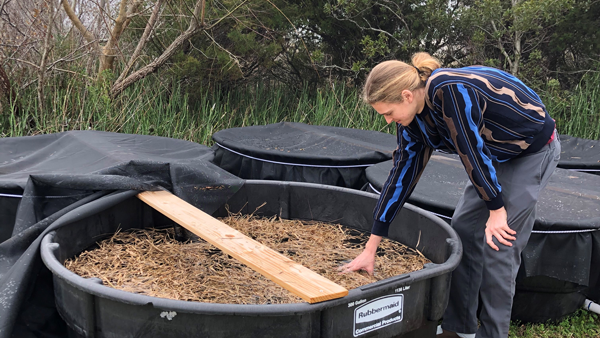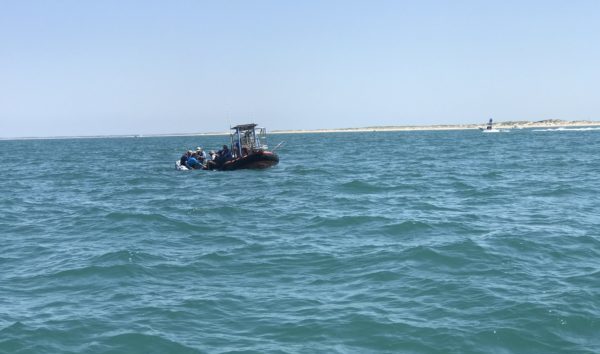CMAST’s Magnetic Resonance Imaging Facility: Our Newest Attraction

CMAST’s new Marine Magnetic Resonance Facility (MMRF) went online in July 2014, allowing marine scientists to study marine life on a whole new level.
According to the project director, Dr. Michael Stoskopf, “The applications for the magnet are limited only by our imagination and the size of the animal we can fit inside the machine.”
The MMRF at CMAST maintains the only wide bore instrument in the world dedicated to in vivo longitudinal dynamic stress-response studies in intact living marine organisms.
Most people are somewhat familiar with an MRI. These are images that are made by collecting data about individual atoms in a patient and translating that information mathematically into brightness patterns in two or three dimensions that we recognize as images.
The CMAST magnet does the same thing, but has a higher resolution than routine medical MRI magnets. The MMRF at CMAST can obtain very detailed pictures of what the tissues and organs inside a marine creature look like, as well as how metabolic pathways respond to environmental stressors. Moreover, there are a wide range of industrial applications for agriculture and aquaculture industries, such as looking at metabolic efficiencies in various strains of crops or aquatic species raised in hatcheries.

“A major feature of the magnet is that it is possible to image live animals and actually obtain real biochemical data from them without having to sacrifice them,” said Dr. Stoskopf. “We usually must anesthetize all but the most sessile animals so that they will remain still through the imaging, and we are experts at marine animal anesthesia if necessary. No other analytical tool can provide these types of data on such a wide range of metabolic pathways. Magnetic resonance techniques can also replace traditional techniques for monitoring the safety and quality of foods.”
The MMRF is the brainchild of NC State’s Dr. Michael Stoskopf and Dr. Jeffrey McDonald of UNC-Chapel Hill, who have been discussing and planning such a facility for decades. The reality first began to take shape with the key support provided by the North Carolina Biotechnology Center, which appropriated funds in 2006 to obtain and operate a large horizontal bore research magnet at the coast. An underused wide bore horizontal magnet (the MRI machine) was located at a hospital in New Jersey, who agreed to donate it to the project. All that was left was to find it a home.

Thanks to an effort spearheaded by CMAST, that home became a facility built on the CMAST campus from the ground up, specifically for the MMRI equipment. CMAST Director Dr. David Eggleston led the way to obtain the grant support from the National Science Foundation, and an equally important investment by NC State University’s Vice Chancellor, Dr. Terri Lomax (Office of Research, Innovation, and Economic Development), allowed the facility to be completed.
CMAST’s wide bore horizontal magnet is the only one in the world dedicated to the study of marine organisms. This facility and the expertise to run it are now available to marine scientists across the country and around the world

- Categories:

